- RESEARCHDistance Learning at AIU is enhanced by vast academic resources and innovative technologies build into the Virtual Campus: Hundreds of self-paced courses with video lectures and step by step lessons, thousands of optional assignments, 140,000 e-books, the Social Media & Networking platform allowing collaboration/chat/communications between students, and MYAIU develop students holistically in 11 areas beyond just academics.
- PROGRAMS OFFERED
- Areas of Study
- Courses and Curriculum
- Open Courses
- Register for a Program
- Associate Program
- Associate in Addiction Counseling
- Associate in Agriculture Food And Resources
- Associate in Anti Terrorism Security
- Associate in Behavior Analysis In Special Education
- Associate in Bioethics
- Associate in Climatology
- Associate in Cultural Theological Communication
- Associate in Culinary Arts
- Associate in Ecotechnology
- View all Associates Programs
- Bachelor Program
- Bachelors in Community Development
- Bachelors in Environmental Science
- Bachelor in Education (B.Ed, BS)
- Bachelors in Economics
- Bachelors in Entrepreneurship
- Bachelors in Financial Administration
- Bachelors in Human Resource Management
- Bachelors in Linguistics
- Bachelors in Nutritional Science
- Bachelors in Occupational Health and Safety
- Bachelors in Psychology
- View all Bachelor Programs
- Doctorate Program
- Doctor | of Biology (PhD)
- Doctorate in Business Administration (DBA, PhD)
- Doctor of Economics (PhD)
- Doctor of Electrical Engineering (D.Sc, PhD)
- Doctor of Finance (PhD)
- Doctorate in International Relations
- Doctorate in Information Technology (D.Sc)
- Doctor of Legal Studies (PhD)
- Doctor of Project Management (PhD)
- Doctor of Sociology (PhD, D.Sc)
- Doctorate in Sustainable Natural Resources Management
- View all Doctorate Programs
- Master Program
- Postdoctoral Program
- Postdoctoral in Animal Science
- Postdoctoral in Anti Terrorism Security
- Postdoctoral in Behavior Analysis In Special Education
- Postdoctoral in Bioethics
- Postdoctoral in Blockchain Technology and Digital Currency
- Postdoctoral in Business Management
- Postdoctoral in Cloud Computing
- Postdoctoral in Computer Engineering
- View all Postdoctoral Programs
AIU offers a wide range of majors in areas including the Arts, Business, Science, Technology, Social, and Human studies. More than 120 degrees and programs are available for adult learners at the associate’s, bachelor’s, master’s, doctoral and postdoctoral level. - VIRTUAL CAMPUS
Distance Learning at AIU is enhanced by vast academic resources and innovative technologies build into the Virtual Campus: Hundreds of self-paced courses with video lectures and step by step lessons, thousands of optional assignments, 140,000 e-books, the Social Media & Networking platform allowing collaboration/chat/communications between students, and MYAIU develop students holistically in 11 areas beyond just academics.
- ALUMNI
The world is YOUR campus!”, that is the message of AIU’s month magazine Campus Mundi. Hear the voices and see the faces that make up AIU. Campus Mundi brings the world of AIU to you every months with inspirational stories, news and achievements by AIU members from around the world (students and staff are located in over 200 countries).
Cultivating the Soil of Success: Leadership and the Architecture of Culture

How does culture impact an organization?
What points should be taken into account when creating organizational values?
What should be taken into account when setting a company’s objectives?
These and other questions can be answered by reading this article in depth. Click on the user session and enjoy reading.
Cultivating the Soil of Success: Leadership and the Architecture of Culture
The CCL, defines leadership as a social process that enables individuals to work together to achieve results that they could never achieve working alone.
But what happens when a leader goes a step further and, among their main objectives, seeks to align their role with the culture of the organization in which they work to maximize their effectiveness and achieve the proposed objectives?
In this reading, we will analyze the article “How Leaders Defend Culture: Six Essential Lessons” published by the MIT Sloan Management Review, and examine, one by one, the steps identified for achieving leadership consistent with corporate culture.

www.brighthorizons.com
Leadership and Culture
Leadership aligned with culture is vital for achieving sustainable results over time, as well as happy employees. While this article explores the topic from a business perspective, its principles can be expanded and applied to all aspects of life and projects.
This reading presents six important lessons intended as a guide for cultivating a desired organizational culture that aligns with the company’s real objectives.

www.alden-mills.com
In addition, we will discover how these lessons impact the context of your self-directed learning and your path toward creating impactful individuals.
- Organizational Culture as a Flag. The reading highlights the importance of clearly defining and communicating the desired cultural values and norms.
It is vital that the entire company knows the values that identify and unite them as a group, and that they share them.
A very important point is that each organization must have its own culture created by and for itself. It cannot be generic or inspired by that of another company—no matter how good its results may be—this way, we guarantee that the culture is fully sustainable over the long term, as it speaks to a purpose that defines and is consistent with the mission and vision.
If we use this example and apply it to the field of students, the equivalent could be to seek consistency between personal and professional goals with clarity. To understand this, you can ask the following questions:
- What kind of student do you aspire to be?
- What values will guide your intellectual pursuits?
Having clear objectives and what you resonate with will help you gain clarity and make informed decisions about your learning resources, methodologies, and the type of intellectual environment you cultivate.
- Lead by example. A leader committed to their organization’s values must model these values and be a spokesperson for their employees. This way, they can teach by example, maintaining consistency from all angles.
Employees should be invited to share these values and even hold sessions where they can evaluate how the organization is handling various situations, according to the company’s values.
One way we can apply this approach to students is to adopt behaviors that align with our professional desires. For example, discipline in study schedules, camaraderie, intellectual curiosity, perpetual development, maintaining study habits, and perseverance.
- 360° Culture. An organization and leaders committed to their culture understand that it becomes the epicenter of what they do and develop. This is why it must be present, taught, and reinforced in every activity performed. Every activity, goal, or task must have the culture embedded within it.
Internal training is very important in this regard, as it must always relate the why and wherefore to the values, giving them meaning.
For example, a company with austerity as part of its culture must keep this concept present in every activity, such as celebrations, training, or system implementation, reinforcing this value in every task.
A student who wishes to maintain excellence in their studies, for example, must find a way to achieve this consistency in all aspects, which will help them excel and maintain their goal. For example, in their research, writing, and presentations, they must find their own distinctive style, in which quality always stands out.
- Align organizational systems: The article highlights the importance of aligning organizational structures, processes, and reward systems with the desired culture.
For example, if the company offers a performance bonus, the KPIs for achieving the bonus should be related to the company’s values.
In the educational context, the system and KPIs should be related to the entire process for achieving objectives, such as aligning the learning environment and routines to support the objectives.
By aligning your personal systems with your learning aspirations, you create an environment conducive to success. Consider the structured approach employed by Leonardo da Vinci, who meticulously documented his observations and experiments, creating a personal system that fostered his multifaceted genius.
- Critical Thinking. Organizations must encourage discussion and constructive criticism in a safe environment. Leaders must look for people who continually ask questions and are critical enough to generate value. If these people have been previously impacted by corporate values, they will ensure their continued impact over time, as they will have the courage to always speak out about any changes or actions that go against the company’s values and objectives.
Critical thinking, in the educational field, helps us understand the reasons for things and constantly seek more knowledge; it’s like a “thirst” that keeps us in perpetual evolution.
- Encourage and Refine. An important part of this never-ending process of maintaining a cohesive leadership and organizational culture is celebrating those who embrace and live the culture, but also weeding out those who aren’t a good fit. This means leaving the door open for those who don’t feel aligned with the stated values.
To extrapolate this to the educational field, it means understanding those activities that do not contribute to professional and life values and knowing how to reorganize them without losing momentum or interest in what you are doing. This allows you to always stay focused on what is important and what generates value.

melissamabe.com
These six steps or recommendations serve as a first roadmap that will help each leader and organization shape their own process. And they are also useful for those working on their educational paths, seeking to lead their own education, consciously cultivating the intellectual and personal attributes that will allow them to achieve their goals and leave a lasting legacy.
We encourage you to reflect on these principles and actively apply them to your learning process. Seize the opportunity to be the architect of your own success and the promoter of your intellectual growth.
To delve deeper into the fascinating dynamics of leadership, organizational culture, and personal development, we invite you to explore our diverse range of programs in areas such as Organizational Leadership, Business Administration, Psychology, and Human Resource Development. These programs offer comprehensive frameworks and advanced knowledge to cultivate your understanding and skills to create positive and impactful environments, whether in your personal life or in your future professional roles. Your path to fulfillment and contributing to a better world begins here.
Related Readings for Further Reflection
Organizational Thriving: Building Your Culture.
Business Education: How Culture and Leadership Impact Organizational Outcomes.
Unraveling Determinants of Inclusive Leadership in Public Organizations.
How Generative AI Changes Organizational Culture.
The Values Change Management Cycle: Ethical Change Management.
Integrating Intelligence Analysis: A Key to Effective Leadership.
How to Walk the Talk on Culture: Former HubSpot CPO Katie Burke
How the Lego Group Built Culture Change: From the Ground Up
Five Tips on Avoiding ‘Terminal Niceness’: Former Red Hat CEO Jim Whitehurst
How to Make Culture a Strategic Imperative: Cummins CHRO Marvin Boakye
Want to continue learning about current topics?
You can delve deeper into different topics in our wide range of recorded lectures, which cover a variety of topics of interest and can be very useful for expanding your knowledge. If this topic interests you, you can explore further in our extensive online library, which also houses a wealth of knowledge, consisting of thousands of eBooks, serving as a valuable complementary resource.
Reminder to our Dear Students,
Please ensure you are logged in as a student on the AIU platform and logged into the AIU Online
Library before accessing course links. This step is crucial for uninterrupted access to your learning
resources.
AIU Success Stories







Contact Us Today!
Begin Your Journey!
AIU’s Summer of Innovation and Growth gives you the ability to earn up to $5000 in tuition credit by completing free lessons and courses.
Whether you’re looking to acquire new skills, advance your career, or simply explore new interests, AIU is your gateway to a world of opportunities. With free access to 3400 lessons and hundreds of courses the ability to earn credits and earn certificates there’s no better time to start learning.
Join us today as a Guest Student and take the first step towards a brighter, more empowered future.
Explore. Learn. Achieve.

Contact Us
Atlantic International University
900 Fort Street Mall 905 Honolulu, HI 96813 [email protected]
Quick Links
Home | Online Courses | Available Courses | Virtual Campus | Career Center | Available Positions | Ask Career Coach | The Job Interview | Resume Writing | Accreditation | Areas of Study | Bachelor Degree Programs | Masters Degree Programs | Doctoral Degree Programs | Course & Curriculum | Human Rights | Online Library | Representations | Student Publication | Sponsors | General Information | Mission & Vision | School of Business and Economics | School of Science and Engineering | School of Social and Human Studies | Media Center | Admission Requirements | Apply Online | Tuition | Faculty & Staff | Distance Learning Overview | Student Testimonials | AIU Blogs | Register for Program | Privacy Policy | FAQ



















